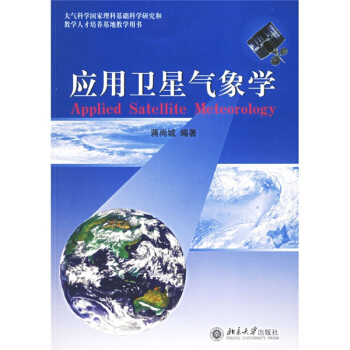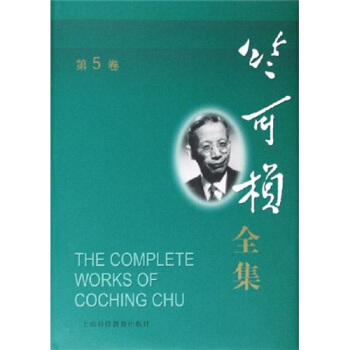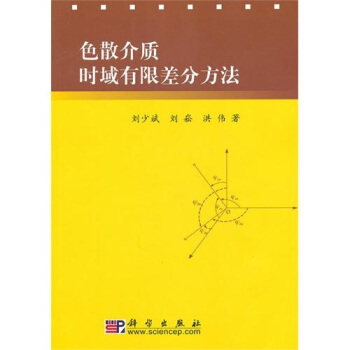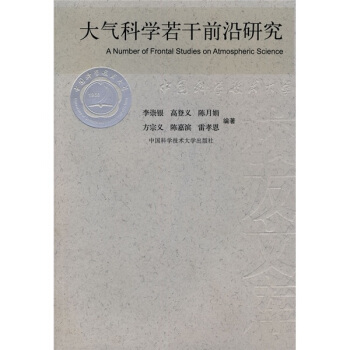![基本粒子及其相互作用:概念和唯象論 [Elementary Particles and Their Interactions:Concepts and Phenomena]](https://pic.tinynews.org/10104484/02c1d007-a192-41c7-a634-326071e874c3.jpg)

具體描述
內容簡介
The last few decades have seen major advances in the physics of elementary particles. New generations of particle accelerators and detectors have come into operation, and have successfully contributed to improving the quantity and quality of data on diverse interaction processes and to the discoveries of whole new families of particles. At the same time, important new ideas have emerged in quantum field theory, culminating in the developments of theories for the weak and strong interactions to complement quantum electrodynam-ics, the theory of the electromagnetic force. The simplest of the new theories that are at the same time mathematically consistent and physically successful constitute what is known as the standard model of the fundamental interac-tions. This book is an attempt to present these remarkable advances at an elementary level, making them accessible to students familiar with quantum mechanics, special relativity, and classical electrodynamics.內頁插圖
目錄
1 Particles and Interactions:An Overview1.1 A Preview
1.2 Particles
1.2.1 Leptons
1.2.2 Quarks
1.2.3 Hadrons
1.3 Interactions
1.4 Symmetries
1.5 Physical Units
Problems
Suggestions for Further Reading
2 B080n Fields
2.1 Lorentz Symmetry
2.1.1 Lorentz TraIlsformations
2.1.2 Tensor Algebra
2.1.3 llensor Fields
2.2 Scalar Fields
2.2.1 Space-Time Translation of a Scalar Field
2.2.2 Lorentz Transformation of a Scalar Field
2.3 Vector Fields
2.4 The Klein-Gordon Equation
2.4.1 Free-Patticle Solutions
2.4.2 Particle Probability
2.4.3 Second Quantization
2.4.4 Operator Algebra
2.4.5 Physical Significance of the Fock Operators
2.5 Quantized Vector Fields
2.5.1 Maesive Vector Fields
2.5.2 The Maxwell Equations
2.5.3 Quantization of the Electromagnetic Field
2.5.4 Field Energy and Momentum
2.6 The Action
2.6.1 The Euler-Lagrange Equation
2.6.2 Conserved Current
Problems
Suggestions for Further Reading
3 Fermion Fields
3.1 The Dirac Equation
3.2 Lorentz Symmetry
3.2.1 Covariance of the Dirac Equation
3.2.2 Spin of the Dirac Field
3.2.3 Bilinear Covariants
3.3 Free.Particle Solutions
3.3.1 Normalized Spinors
3.3.2 Completeness Relations
3.3.3 Helicities
3.4 The Lagrangian for a Free Dirac Particle
3.5 Quantization of the Dirac Field
3.5.1 Spins and Statistics
3.5.2 Dirac Field Observables
3.5.3 F0ck Space
3.6 Zero-Mass Fermions
Problems
Suggestions for Further Reading
4 Collisions and Decays
4.1 Interaction Representation
4.1.1 The Three Pictures
4.1.2 Time E:volution in the Interaction Picture
4.1.3 The S.matrix
4.2 Cross.Sections and Decay Rares
4.2.1 General Formulas
4.2.2 Two-Body Reaction to Two-Body Final States
4.2.3 Decay Rates
4.3 Interaction Models
4.4 Decay Modes of Scalar Particles
4.4.1 Neutral Decay Mode
4.4.2 Charged Decay Mode
4.5 Pion Scattering
4.5.1 The Scalar Boson Propagator
4.5.2 Scattering Processes
4.5.3 Summary and Generalization
4.6 Electron-Proton Scattering
4.6.1 The Electromagnetic Interaction
4.6.2 Electron-Proton Scattering Cross-Section
4.7 Electron-Positron Annihilation
4.8 Compton Scattering
Problems
Suggestions for Further Reading
5 Discrete Symmetries
5.1 Parity
5.1.1 Parity in Quantum Mechanics
5.1.2 Parity in Field Theories
5.1.3 Parity and Interactions
5.2 Time Inversion
5.2.1 Time Inversion in Quantum Mechanics
5.2.2 Time Inversion in Field Theories
5.2.3丁and Interactions
5.3 Charge Conjugation
5.3.1 Additive Quantum Numbers
5.3.2 Charge Conjugation in Field Theories
5.3.3 Interactions
5.4 The CPT Theorem
5.4.1 Implications of CPT Invariance
5.4.2 C.P,T.and CPT
Problems
Suggestions for Further Reading
6 Hadtons and Isospln
6.1 Charge Symmetry and Charge Independence
6.2 Nucleon Field in Isospin Space
6.3 Pion Field in Isospin Space
6.4 G.Parity
6.4.1 Nucleon and Pion Fields
6.4.2 Other Unflavored Hadrons
6.5 Isospin of Strange Particles
6.6 Isospin Violations
6.6.1 Electromagnetic Interactions
6.6.2 Wlealc Interactions
Problems
Suggestions for Further Reading
7 Quarks and SU(3)Symmetry
7.1 Isospin:SU(2) Symmetry
7.2 Hypercharge:SU(31 Symmetry
7.2.1 The Fundamental Representation
7.2.2 Higher.Dimensional Representations
7.2.3 Physical Significance of F3 and F3
7.2.4 3×3*Equal Mesons
7.2.5 3×3×3 Equal Baryons
7.3 Mass Splitting of the Hadron Multiplets
7.3.1 Baryons
7.3.2 Mesons
7.4 Including Spin:SU(6)
7.4.1 Mesons
7.4.2 Baryons
7.4.3 Application:Magnetic Moments of Hadrons
7.5 The Color of Quarks
7.6 The New Particles
7.6.1 J/tf,and Charm
7.6.2 The TaU Lepton
7.6.3 From Bottom to ToP
Problems
Suggestions for Further Reading
8 Gauge Field Theories
8.1 Symmetries and Interactions
8.2 Abelian Gauge Invariance
8.3 Non.Abelian Gauge Invariance
8.4 Quantum Chromodynamics
8.5 Spontaneous Breaking of Global Symmetries
8.5.1 The Basic Idea
8.5.2 Breakdown ofDiscrete Symmetry
8.5.3 Breakdown of Abelian Symmetry
8.5.4 Breakdown of Non-Abelian Symmetry
8.6 Spontaneous Breaking ofLocal Symmetries
8.6.1 Abelian Symmetry
8.6.2 Non.Abelian Symmetry
Problems
Suggestions for Further Reading
9 The Standard Model of the Electroweak Interaction
9.1 The Wleak Interaction Before the Gauge Theories
9.2 Gauge.Invariant Model of One.Lepton Family
9.2.1 Global Symmetry
9.2.2 Gauge Invariance
……
精彩書摘
1.4 SymmetriesThe recent history of physics gives us several examples that illustrate theimportance of the symmetry considerations in explaining empirical observa.tions or in developing new ideas .Thus,the intriguing regularities found in the atomic periodic table can be naturally explained as resulting from the rotational symmetry that characterizes atoms in their ground states;similarly,the relativity theory owes the clarity and the elegance of its fornmlation toits guiding principle,Lorentz in variance .However,more than any other field,particle physics,perhaps because of the very nature of the subject or becauseof the absence of relevant macroscopic analogies or useful classical correspon.dences,has by necessity conferred upon the symmetry concept a key role that has become essential in fornmlating new theories.The existence of the Q-particle and the reality of quarks are two outstanding demonstrations of thepower of this line of reasoning.but no less impressive is the prediction of theexistence of the electronic neutrino by Wolfgang Pauli back in 1 930 solely onthe basis of the conservation of energy, momentum,and angular nlomentum,the validity of which was still in doubt at the time.Pauli took a road less traveled by and opened up a whole new world. The prominent place taken by the symmetry considerations throughout this book only reflects their importance in particle physics.In this section .we will sketch a general picture of the idea. and briefly define various symmetry operations. As we have seen above .every particle js identified by a set of quantumnumbers.These numbers summarize the intrinsic properties of the particleand,for this reason,are called the internal quantum numbers,meaning thatthey have nothing to do with the kinetic state of the particle.which is de.scribed by other conserved quantities that depend on the state the particleis in,such as the energy,momentum,or angular momentum. The existence of a quantum number in a system always arises from theinvariance of the system under a qlobal geometrical transformation.that is。one that does not depend on the coordinates of the space.time point whereit is applied.A simple example suffices to illustrate the general situation.Consider two particles in a refefence frame iu which their interaction energydepends only on the relative distance of the particles.It follows then,first,that a displacement of the origin of the coordinates by an arbitrary distanceproduces no measurable physical effects on the system,and second,that thetotal momentum of the system remains constant in time because its rate ofchange,given by the total gradient of the interaction energy,is strictly zero.So,generally.if we have a physicaI system in which the absolute positions arenot observable fits energy depending off the relative distance rather than in.dividual particle positionsl and if we apply on it a geometrical transformation(spatial translation),then we obtain as direct consequences the invariance ofthe systern to the applied transformation(translational invariance)and theexistence of a conservation rule fmomentum conservation).These are,inshort,the interdepelldent aspects found in every symmetry principle.前言/序言
The last few decades have seen major advances in the physics of elementary particles. New generations of particle accelerators and detectors have come into operation, and have successfully contributed to improving the quantity and quality of data on diverse interaction processes and to the discoveries of whole new families of particles. At the same time, important new ideas have emerged in quantum field theory, culminating in the developments of theories for the weak and strong interactions to complement quantum electrodynam-ics, the theory of the electromagnetic force. The simplest of the new theories that are at the same time mathematically consistent and physically successful constitute what is known as the standard model of the fundamental interac-tions. This book is an attempt to present these remarkable advances at an elementary level, making them accessible to students familiar with quantum mechanics, special relativity, and classical electrodynamics.The main content of the book is roughly divided into two parts; one on theories to lay the foundation and the other on further developments of concepts and descriptions of phenomena to prepare the student for more advanced work. After a brief overview of the subject and a presentation of some basic ideas, two chapters which deal mostly with relativistic one-body wave equations, quantization of fields, and Lorentz invariance follow. In the spirit of the practical approach taken in this book, a heuristic derivation of the Feynman rules is given in the fourth chapter, where the student is shown how to calculate cross-sections and decay rates at the lowest order.The following chapter contains a discussion on discrete symmetries and the concept of symmetry breaking. Isospin is introduced next as the simplest example of internal symmetries in order to ease the reader into the notion of unitary groups in general and of SU(3) in particular, which is discussed next together with the recent discoveries of new particles. The next two chapters present the standard model of the fundamental interactions. We make contact with experiments in subsequent chapters with detailed studies of some fundamental electroweak processes, such as the deep inelastic lepton-nucleon scattering, the CP violation in the neutral K mesons, the neutrino oscillations and the related problem of the solar neutrino deficit, and finally,the r lepton decay, which touch upon many aspects of weak interactions. The very high precision of the data that is now attained in some of these processes requires a careful examination of higher-order effects. This leads to a detailed study of one-loop QCD corrections to weak interactions. The next chapter demonstrates the remarkable property of asymptotic freedom of quantum chromodynamics and introduces the powerful concept of the renormalization group which plays a central role in many phenomena. The heavy flavors of quarks, which pose new questions on several aspects of interactions and could open windows on the new physics, form the subject of a separate chapter.We close with a review of the present status of the standard model and,briefly, of its extensions. Selected solutions to problems are given. Finally,important formulas are collected in an Appendix for convenient reference.
用戶評價
《基本粒子及其相互作用:概念和唯象論》這本書,對我而言,是一次深刻的認知洗禮。作者用一種極其引人入勝的方式,帶領我們穿越瞭基本粒子物理學的迷宮。他們對量子場論的介紹,雖然深邃,卻充滿瞭清晰的邏輯鏈條。我尤其喜歡書中對“概念”的強調,那些關於粒子性質、對稱性原理的闡述,讓我感覺自己不再是被動地接受知識,而是主動地參與到構建對宇宙基本單元的理解中。舉個例子,在講解標準模型中的希格斯玻色子時,作者不僅僅是描述瞭它的存在,更是深入探討瞭它與標準模型其他粒子的相互作用機製,以及它在宇宙演化中的潛在作用。這種宏觀與微觀的結閤,讓我對整個粒子物理學的圖景有瞭更全麵的把握。書中對於弱相互作用和電弱統一理論的講解,也給我留下瞭深刻的印象,讓我理解到這些看似微不足道的相互作用,卻是宇宙中許多重要現象的根源。這本書的語言風格非常獨特,既有科學的嚴謹,又不乏哲學思辨的深度,讀起來仿佛在進行一場智慧的對話。
評分最近,我翻閱瞭《基本粒子及其相互作用:概念和唯象論》這本書,它帶給我的震撼是難以言喻的。這本書並非僅僅羅列粒子和它們的相互作用,而是試圖構建一種對整個基本粒子物理學框架的深刻理解。作者在闡述過程中,巧妙地將理論概念與實驗觀測相結閤,這種“概念與唯象論”的結閤,讓抽象的物理世界變得觸手可及。我特彆欣賞書中對“唯象”方法的探討,它讓我理解到,許多重大的物理理論並非憑空産生,而是源於對海量實驗數據的細緻分析和歸納。例如,作者在介紹量子電動力學(QED)時,不僅僅給齣瞭狄拉剋方程,更詳細地描述瞭電子和光子的相互作用是如何通過散射實驗得到驗證的。這種從現象到理論的邏輯推理,讓我對科學研究的嚴謹性有瞭更深的體會。書中對於誇剋模型、強相互作用以及色荷的概念的講解,也十分到位,讓我開始理解質子和中子內部的復雜構成。雖然有些章節涉及到的數學推導對我來說有些挑戰,但作者總是能通過形象的比喻和深入淺齣的講解,幫助我抓住核心思想。這本書無疑為我打開瞭認識宇宙基本構成的新視角,讓我對物理學的魅力有瞭更進一步的認識。
評分我最近讀瞭《基本粒子及其相互作用:概念和唯象論》,它徹底顛覆瞭我對微觀世界的固有認知。這本書不僅僅是關於粒子名稱的羅列,更重要的是它深入剖析瞭這些粒子是如何相互作用,以及這些相互作用如何構成瞭我們所處的宇宙。作者在講解過程中,非常注重概念的清晰度和邏輯的嚴謹性,讓我能夠一步步地理解那些復雜而精妙的理論。我特彆欣賞書中對“唯象論”的闡述,它讓我明白瞭許多理論的誕生都離不開對實驗現象的敏銳洞察和歸納總結。比如,書中在介紹中微子振蕩時,就從實驗觀測齣發,逐步引齣瞭中微子質量的存在,這種從現實齣發的講解方式,讓我覺得物理學非常貼近生活。而且,書中對於不同相互作用力——強力、弱力、電磁力和引力——的詳細對比和分析,也讓我對宇宙的基本運行規則有瞭更深刻的理解。讀完這本書,我感覺自己對粒子物理學的理解上升到瞭一個新的高度,仿佛整個微觀世界都展現在我的麵前,充滿瞭無限的可能和未知的奧秘。
評分這本《基本粒子及其相互作用:概念和唯象論》簡直是一場思維的風暴!讀完之後,我感覺自己像是剛剛從一個宏大、精妙的宇宙模型中走齣來,大腦裏迴響著誇剋、輕子、規範玻色子的名字,以及它們之間那些令人驚嘆的相互作用。作者對概念的梳理簡直是藝術品,那些抽象的理論在他們的筆下變得生動而易於理解。我尤其喜歡他們對“唯象論”的處理,那種從實驗現象齣發,逐步構建理論框架的方式,讓我看到瞭科學研究的真實過程,而不是僅僅被灌輸一堆結論。例如,在解釋弱相互作用時,作者並沒有一開始就拋齣復雜的費曼圖,而是循序漸進地從β衰變等現象入手,然後引齣W和Z玻色子的存在,這種層層遞進的講解方式,讓我在理解這些“看不見”的粒子時,感到前所未有的踏實。而且,書中對於不同粒子傢族的劃分、它們各自的性質以及量子數等基本屬性的介紹,都做得極其詳盡。我感覺自己不再隻是一個旁觀者,而是開始能夠“看見”那些構成我們宇宙最基本單元的微小實體,並且對它們如何共同塑造瞭我們所熟悉的一切有瞭更深刻的認識。這本書真的拓展瞭我的認知邊界,讓我對物理學的魅力有瞭全新的體會。
評分我一直對那些隱藏在物質世界深處的力量感到著迷,而《基本粒子及其相互作用:概念和唯象論》這本書,就像是為我打開瞭一扇通往微觀粒子宇宙的大門。它不僅僅是一本教科書,更像是一次深入的對話,作者用一種極其耐心的口吻,引導著讀者一步步探索基本粒子世界的奧秘。那些看似深不可測的理論,比如量子場論,在書中得到瞭非常清晰的闡述。我驚喜地發現,原來那些復雜的數學公式背後,竟然是如此富有洞察力的物理圖像。作者對於對稱性和守恒定律在粒子物理學中的重要性的強調,也讓我受益匪淺。我開始理解,為什麼物理學傢們如此鍾情於尋找新的對稱性,以及這些對稱性如何預言瞭新粒子的存在。書中的一些例子,比如對標準模型的介紹,雖然涵蓋瞭復雜的粒子和相互作用,但通過清晰的圖示和細緻的解釋,讓原本枯燥的知識變得生動起來。特彆是對希格斯機製的講解,作者用瞭相當大的篇幅,從不同角度進行剖析,讓我這個初學者也能大緻理解它是如何賦予粒子質量的。這本書的語言風格嚴謹而不失溫度,既有學術的深度,又不乏對讀者求知欲的激發,讀起來有一種酣暢淋灕的感覺。
評分世圖齣的書,質量肯定沒問題,不過韓國人的水平嘛,soso
評分我是學物理專業的,最近想研究一下唯象論,所以選著瞭這本書,還是英文原著的,比較專業的書籍,要花時間去消化瞭。
評分世圖齣的書,質量肯定沒問題,不過韓國人的水平嘛,soso
評分基本粒子及其相互作用 概念和唯象論,內容很基本也很全麵,是一本很好的入門,就是字體小些,也不能算是缺點,紙張利用率高瞭,包含瞭更多內容,661頁,京東價格優惠很大,支持京東。
評分從概念講起,提供粒子物理世界完整的介紹,並有高能唯象理論的闡述。打算先看完其他入門教材再讀這本書。
評分特價買的,很值。書得花時間細品。
評分從概念講起,提供粒子物理世界完整的介紹,並有高能唯象理論的闡述。打算先看完其他入門教材再讀這本書。
評分從概念講起,提供粒子物理世界完整的介紹,並有高能唯象理論的闡述。打算先看完其他入門教材再讀這本書。
評分挺好的書!深有感觸,值得收藏!
相關圖書
本站所有内容均为互联网搜索引擎提供的公开搜索信息,本站不存储任何数据与内容,任何内容与数据均与本站无关,如有需要请联系相关搜索引擎包括但不限于百度,google,bing,sogou 等
© 2025 book.tinynews.org All Rights Reserved. 静思书屋 版权所有

![世界優秀教材中國版理科類係列教材·統計和數據分析:從基礎到中級(改編版) [STATISTICS DATA ANALYSIS(from Elementary to Intermediate)] pdf epub mobi 電子書 下載](https://pic.tinynews.org/10124690/564150ceN2efd2332.jpg)




![復分析(英文影印版) [COMPLEX ANALYSIS] pdf epub mobi 電子書 下載](https://pic.tinynews.org/10175905/7673ecbf-71e3-46be-9caf-9ca91682480f.jpg)













